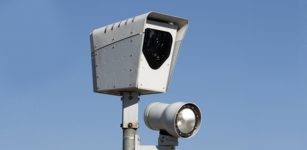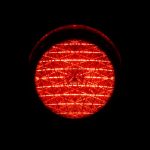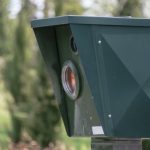How Do Red Light Cameras Work?

A new red light speed camera began operating at the intersection of East Street and Moss Street in Nowra on 17 September. The intersection now joins one of 170-odd others across NSW that are fitted out with these devices.
Red light cameras were initially rolled out in this state in the 1980s. But following a spike in road fatalities in 2006, the NSW government announced it would be replacing the old style wet film cameras with digital red light speed cameras, which are capable of detecting excessive speed as well.
As the NSW Centre for Road Safety points out, running red lights can lead to serious T-bone crashes and accidents involving pedestrians. So these cameras are meant to be installed at traffic lights where there is an increased risk of collisions. But this is not always the case.
Red light cameras in operation
So how do red light cameras work?
Well, these cameras can now detect and record a speeding vehicle at any time regardless of which colour the lights are. They do this by utilising tracking radar or electronic detectors embedded in the surface of the road.
But, 60 percent of all red light camera offences are from people running red lights. And the red light detection function of the camera is triggered when both sets of a vehicle’s wheels cross the white stop line after the lights have turned red.
The camera is positioned to take photographs of the rear of the vehicle after it enters the intersection following the lights turning red. And these cameras should not be capturing vehicles crossing the stop line when the lights are amber or green.
What happens if I’m caught by a camera?
Regulation 56 of the Road Rules 2014 makes it an offence to run a red light. The penalty for doing so is a $469 fine and the loss of three demerit points. If the camera is installed in a school zone and the incident takes place during school hours, a driver will be fined $587 and lose four points.
If a car travels over the stop line at an intersection featuring a red light camera, the device automatically takes two photos of the vehicle, which detail the number plate, the date and time of the offence, the location, the speed the car was traveling at and the direction it was heading in.
Roads and Maritime Services (RMS) then post a penalty notice to the address of the person the car is registered to. The fine is then handled by Revenue NSW. And you can look up the details of your alleged misdemeanour and download a copy of the photo on their website.
If you suspect a camera has photographed you, it’s important to make sure your address is updated with RMS, as contrary to the urban myth, if the fine is sent to the wrong address, you’re still liable to pay it, and you may then be penalised for late payment and for failing to update your address.
Where are red light cameras located?
The NSW government is currently rolling out red light cameras at 200 intersections across the state. As of 31 December 2016, there were 191 red light cameras installed at 171 intersections. Eight two of these locations previously had wet film red light cameras installed.
The current locations for all red light speed cameras around the state can be looked up on the Centre for Road Safety website. And all of these intersections are signposted to warn approaching motorists that there is a “red light speed camera ahead.”
How effective are red light cameras?
According to the Centre for Road Safety’s Speed Camera Programs: 2017 Annual Review, overall, there’s been a reduction in fatal crashes and injury crashes in the locations where red light cameras have been installed, compared with the five year period prior to installation.
The report outlines that there’s been a 33 percent reduction in fatal crashes and serious injury crashes, a 54 percent reduction in fatalities, a 35 percent reduction in serious injuries, and a 49 percent reduction in pedestrian casualties.
The review only makes recommendations for 91 of the 171 red light cameras, as the others have not been in operation for more than five years.
The top performing red light camera is located at the intersection of Bondi Road and Old South Head Road in Bondi Junction. At that location, there’s been a 100 percent decrease in the amount of fatal and serious injury crashes.
However, at 22 of the locations, there’s been a reported increase in fatal and serious injury crashes. Twenty one of these red light cameras are currently being monitored, while the worst performing camera at Anzac Parade and Lang Road in Moore Park is up for review. This has led to criticism that many cameras are more about revenue raising than saving lives.
What happens if I wasn’t driving the vehicle?
If you receive a penalty notice for running a red light, but you weren’t driving the vehicle, you can fill out the statutory declaration form that’s provided with the notice and then forward it to Revenue NSW for processing.
Being a statutory declaration, it’s important not to provide false information as the penalties one can incur for doing so are far greater than those imposed for running a red light.
What if you I want to dispute the allegation?
Red light cameras are not always accurate. And it’s possible to successfully challenge the penalty notice and avoid a fine or the loss of your licence. On receiving a penalty notice, an individual can request a review of their case directly with Revenue NSW.
And it’s also open for you to take the matter to court. And if you decide to take that step, it’s important to seek expert advice from an experienced traffic lawyer, as they know the ins and outs of the tricky legal system.
The aid of a good lawyer can result in the red light charge being dropped or the penalty for the infringement being reduced. And in cases where a loss of licence seems imminent, a proficient lawyer can assist you in appealing for leniency.
Going to court for a traffic offence?
If you are going to court for a traffic offence, call or email Sydney Criminal Lawyers anytime to arrange a free first consultation with an experienced, specialist traffic lawyer who will accurately advise you of your options, the best way forward, and fight for the optimal outcome in your specific situation.








